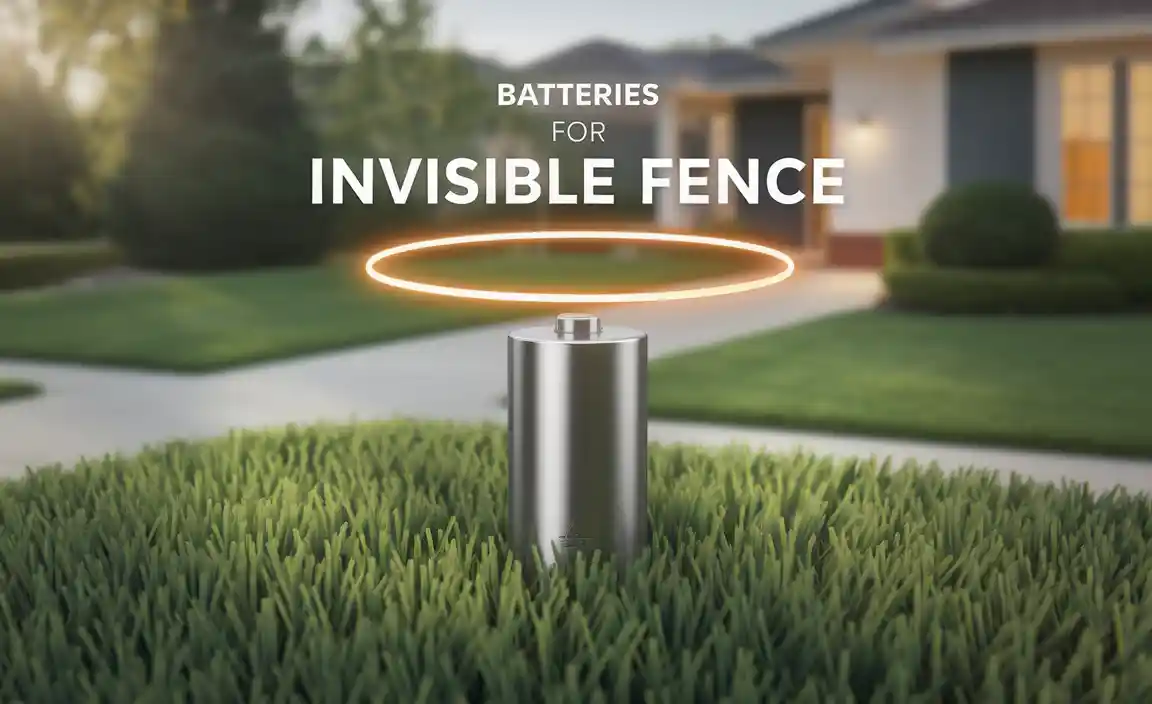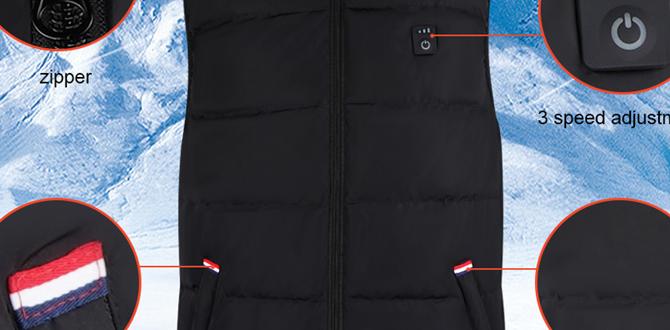Have you ever wondered how to get the most from your electric vehicle’s battery? Proper charging can greatly extend its life and performance. Each time you plug in your EV, you have a chance to make it last longer.
Did you know that charging practices can differ quite a bit? Many drivers are unsure about the best methods. Some think fast charging is always the way to go. But in reality, slow and steady wins the race.
Imagine this: you buy a shiny new electric car and you’re excited to drive it. But what if you discover later that you’ve hurt the battery? Learning about EV battery charging best practices can help avoid this problem. Keeping your battery healthy is like caring for a pet. It needs attention and the right kind of care.
In this article, we will explore some essential tips and tricks. You’ll discover effective strategies to maximize your battery’s life and efficiency. So, let’s dive in and unlock the secrets to smart EV charging!
Ev Battery Charging Best Practices For Optimal Performance
EV Battery Charging Best Practices
Charging your electric vehicle (EV) doesn’t have to be tricky! To keep your battery healthy, consider timing and technique. It’s best to charge slowly at home during off-peak hours. Did you know that frequent fast charging can wear your battery down more quickly? Using a dedicated charger and avoiding running your battery to zero can also help. These simple tips can extend the life of your EV battery and save you money!Optimal Charging Levels
Recommended charging percentages for battery health. Impact of charging to 100% versus partial charging.Keeping your EV battery happy is like keeping a pet goldfish alive. You want the right balance! It’s best to charge your battery between 20% and 80%. Charging to 100% all the time can be like cramming for a test; it stresses the battery and decreases its lifespan. Think of partial charging as a gentle stroll while a full charge is a marathon! Here’s a quick look:
| Charging Level | Battery Health Impact |
|---|---|
| 20% – 80% | Optimal for longevity |
| 100% | Can harm battery health |
So, charge smart and your battery will thank you with zippy rides and fewer trips to the charging station!
Charging Frequency and Timing
Benefits of regular charging versus letting battery deplete. Best times to charge to avoid peak electricity rates.Charging your EV often is key. Regular charging keeps your battery healthy. It’s better than letting it run low. A drained battery can wear out faster. Charge when electricity costs less. This usually happens at night. Here are some tips:
- Charge frequently to avoid deep depleting your battery.
- Choose off-peak hours like late at night or early morning.
- Set reminders so you don’t forget to charge.
Following these tips can save you money and extend battery life.
What are the benefits of charging regularly?
Regular charging prevents battery strain and maximizes its lifespan. It helps maintain good performance.
Best times to charge
- Late night after 10 PM
- Early morning before 8 AM
Charging Station Types
Differences between Level 1, Level 2, and DC fast charging. Considerations for home versus public charging stations.Charging stations come in different types. Each type works at a different speed. Here are the main ones:
- Level 1: Uses a standard wall outlet. It’s slow and great for home charging overnight.
- Level 2: Uses a special home or public charger. It charges faster, like during a grocery trip.
- DC Fast Charging: This is the fastest type. It can charge a car up to 80% in about 30 minutes, usually found on highways.
Home stations are often Level 1 or Level 2. Public stations can be all three types. Choosing the right one is key for quick charges and long trips!
Temperature Considerations
Effects of extreme temperatures on battery performance. Best practices for charging in hot or cold conditions.Extreme temperatures can be tricky for your battery. In hot weather, batteries can overheat, leading to poor performance and a shorter life. Cold temperatures can make charging slow and less effective. To keep your battery healthy, follow these tips:
| Temperature Condition | Best Charging Practice |
|---|---|
| Hot Weather | Charge in a shaded area. |
| Cold Weather | Precondition your battery with heating pads. |
Think of your battery as a diva—it needs the right environment to shine! Treat it well, and it will treat you well in return.
Understanding Charger Compatibility
Importance of using manufacturerrecommended chargers. Common charging connectors and standards.Using the charger that comes with your electric vehicle is very important. It ensures safety and efficiency during ev battery charging. Different chargers work with different vehicles. Popular connectors include Type 1 and Type 2. Using the right charger prevents damage. It also helps the battery last longer. Always check your vehicle’s manual for the best type of charger.
Why is charger compatibility important?
Charger compatibility is vital for battery safety and performance. Using the wrong charger can lead to battery damage or even fires. Stick with manufacturer-recommended options to keep your vehicle safe.
Monitoring Battery Health
Tools and apps for tracking battery performance. Signs of battery degradation and when to consult a professional.Keeping an eye on your EV battery’s health is key! Several tools and apps can help you track battery performance like a pro. Think of them as your battery’s best friends. Signs of battery degradation include a shorter driving range or unexpected shutdowns, which is not just annoying—it’s like your battery deciding to take a nap! Don’t hesitate to consult a professional if you notice these signs; they can help you get your battery back in shape. Here’s a handy table of some useful tools:
| Tool/App | Purpose |
|---|---|
| Battery University | Learn about battery tech |
| ChargePoint | Track charging progress |
| PlugShare | Find charging stations |
| EVNotify | Get notifications on battery health |
Remember, a little maintenance goes a long way. So keep those tools handy and your battery cozy!
Environmental Impact of Charging
Benefits of renewable energy sources for EV charging. Strategies for reducing carbon footprint while charging.Charging electric vehicles (EVs) can be better for our planet. Choosing renewable energy sources like solar or wind helps reduce pollution. These clean energies do not harm the environment. Here are some benefits and strategies:
- Reduces greenhouse gas emissions.
- Decreases reliance on fossil fuels.
- Supports a sustainable future.
To lower your carbon footprint while charging, try these tips:
- Charge during off-peak hours.
- Use smart chargers to monitor energy use.
- Choose chargers powered by renewable energy.
By following these steps, you help protect our planet. Every small action counts!
What are the benefits of using renewable energy for EV charging?
Using renewable energy for EV charging reduces pollution, conserves resources, and promotes a healthy environment for future generations.
Future Trends in EV Battery Charging
Innovations in charging technology (wireless, ultrafast). Predictions for EV charging infrastructure growth and accessibility.Exciting changes are coming for EV battery charging! Imagine charging your car without wires—sounds like magic, right? Well, it’s called wireless charging, and it’s becoming a reality. Plus, there’s ultrafast charging, which can fill your battery in lightning speed! Picture this: you grab a coffee and your EV is ready to roll while you sip pumpkin spice. Developers predict more charging stations will pop up everywhere. Soon, charging your car will be as easy as stopping for a snack!
| Innovation | Description |
|---|---|
| Wireless Charging | Eliminates cords, making charging super convenient. |
| Ultrafast Charging | Charges your battery in minutes instead of hours. |
| Infrastructure Growth | More stations mean easier access for everyone. |
Conclusion
In conclusion, following the best practices for EV battery charging can help you maximize your vehicle’s lifespan and efficiency. Always use the right charger, avoid full discharges, and charge during cooler times. Regular checks can ensure your battery stays healthy. For more tips and detailed information, consider reading further on EV battery care. Let’s take great care of our rides!FAQs
What Are The Best Charging Practices To Maximize The Lifespan Of An Ev Battery?To help your electric vehicle (EV) battery last longer, charge it when it’s around 20% full. Try to unplug it when it reaches about 80% charge. Avoid charging it all the way to 100% or letting it drop to 0%. Keeping it at a moderate level helps protect the battery. Also, don’t leave it plugged in when it’s fully charged.
How Does The Temperature Affect The Charging Efficiency And Performance Of An Electric Vehicle Battery?Temperature can really change how well an electric vehicle (EV) battery works. When it’s too cold, the battery takes longer to charge and may not hold as much power. If it’s too hot, the battery can get damaged and won’t last as long. The best temperature for charging is usually mild, like room temperature. This helps the battery work better and last longer!
What Is The Recommended Charging Frequency For Electric Vehicle Owners To Maintain Optimal Battery Health?To keep your electric vehicle’s battery healthy, it’s best to charge it often, but not all the way to 100%. You should try to keep the battery between 20% and 80% charged. If you charge it too much or let it drop too low, it can wear out faster. So, charging a little bit each day is a good idea!
Are There Specific Charging Methods Or Levels (Level Level Dc Fast Charging) That Are Best For Different Types Of Ev Battery Use?Yes, there are different charging methods for electric vehicle (EV) batteries. Level 1 charging uses a regular home outlet and is best for daily use. Level 2 charging is faster and works well for longer trips. DC fast charging is the quickest option. It’s perfect for getting a big charge on the go. Choose the charging method based on how quickly you need to recharge!
How Can An Ev Owner Monitor And Manage Battery Health During The Charging Process To Prevent Overcharging And Overheating?You can keep your electric vehicle (EV) battery healthy while charging. First, use the car’s app or display to check the battery level during charging. Set a limit so it doesn’t charge too high, like 80%. Avoid charging in very hot places. Lastly, check the charger to make sure it’s safe and working well.







